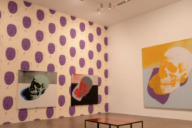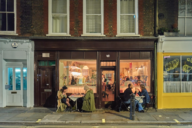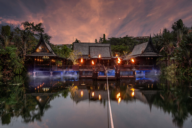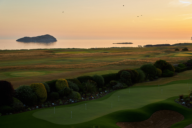KAHNAWAKE: STREET PORTRAITS ON A MOHAWK RESERVE
Outside Montreal, on the south shore of the Saint Lawrence River in Quebec, lies the Mohawk reserve Kahnawake. The reserve has close to 9,000 inhabitants. I have always felt a bit ambivalent to the word ‘Indian’, but I soon realised that ‘Indian’ is the name most inhabitants in Kahnawake call themselves. The word ‘tribe’ is however not used anymore; the correct term nowadays is ‘nation’, where the Mohawks in Canada are called First Nation.
In Kahnawake there is a nursery, a school, a fire station, a local council, galleries and two ‘longhouses’ for ceremonies. They also have their own police force, called Peacekeepers. Most people I met had grown up in Kahnawake and although they might have moved away once, they had now moved back again. During my two days in Kahnawake I got to know DJs from the K 103 radio station, chiefs (yes, that is what they are called) at the local council, peacekeepers and people I met in cafes and in the street. The editor of Eastern Doors, Steve Bonspiel, was patient with me and answered my questions with consideration.
I could write about the illegal tobacco trade, scratchcards and bingo, but what I felt to be most central to my visit was the ever-present question of the notion of identity. To be allowed to call oneself Mohawk the inheritance must go back for four generations and through a percentage of blood relation the lineage is determined – First Nation or not. This method is called Blood Quantum and it determines whether a person should be registered in the Mohawk or the federal registers. The nations who use Blood Quantum as a requirement for membership usually registers this on a so called CDIB card (Certificate of Degree of Indian Blood) issued by the United States Government. It should be pointed out though that there are nations who use completely different qualifications for membership.
The clear distinction that Blood Quantum brings not only relates to identity and belonging but it also has a direct impact on the inhabitants in other ways. For example, the origin of a perpetrator determines which police force will have the authority to intervene; whether it will be the peacekeepers or the federal police. This means that non-Indians fall under federal jurisdiction while lesser crimes committed in a reserve by one indian against another falls under Indian jurisdiction. Minor offences are dealt with by the peacekeepers while major offences become federal matter. Identity thus becomes both a political and legal concern.
I discovered that the Mohawks’ appearances varied, some were blonde with blue eyes, others red-haired – the stereotype image of an ‘indian’ did not fit in. I think we so easily forget that national identity and cultural references do not have that much to do with either appearance, clothes or place of birth. Who is the more Indian? A person who speaks fluent Mohawk or someone with a blood status above 50%? We often have a great need to identify ourselves and others, and although identity is changeable and diffuse, people struggle to pin down exactly what or who we are.
I met many people during my two days in Kahnawake, perhaps because I smoked Lucky7 after all? Or maybe I was just fortunate. My approach was to share my own story of being both a second generation immigrant and a Swedish expat. I could relate to the people I met, the twenty year old punk who loved Exploited, a middle aged woman who pointed out that we had something in common since she was a quarter Swedish, Kenneth John Montour who told me in a proud voice how both his father and his grandfather had been peacekeepers, and Leteronni who explained in detail the ceremony where the participants eat and dance throughout the night and thereby also feed the dead. The Mohawks and their stories really enriched my visit.
In 2013 the organisation Idle No More in Canada received enormous global attention for its protests. Idle No More works at grass root level against pollution and economic and social inequality. Scotland, my current home, is preparing itself for independence and next year the referendum will take place. In many places minorities and nations are rising, and demand not only independence but recognition. It seems as if it is the very acknowledgement that brings redemption and that full acceptance is what we all need to grow – as cultures, nations and individuals.
Words & pictures: Jannica Honey













